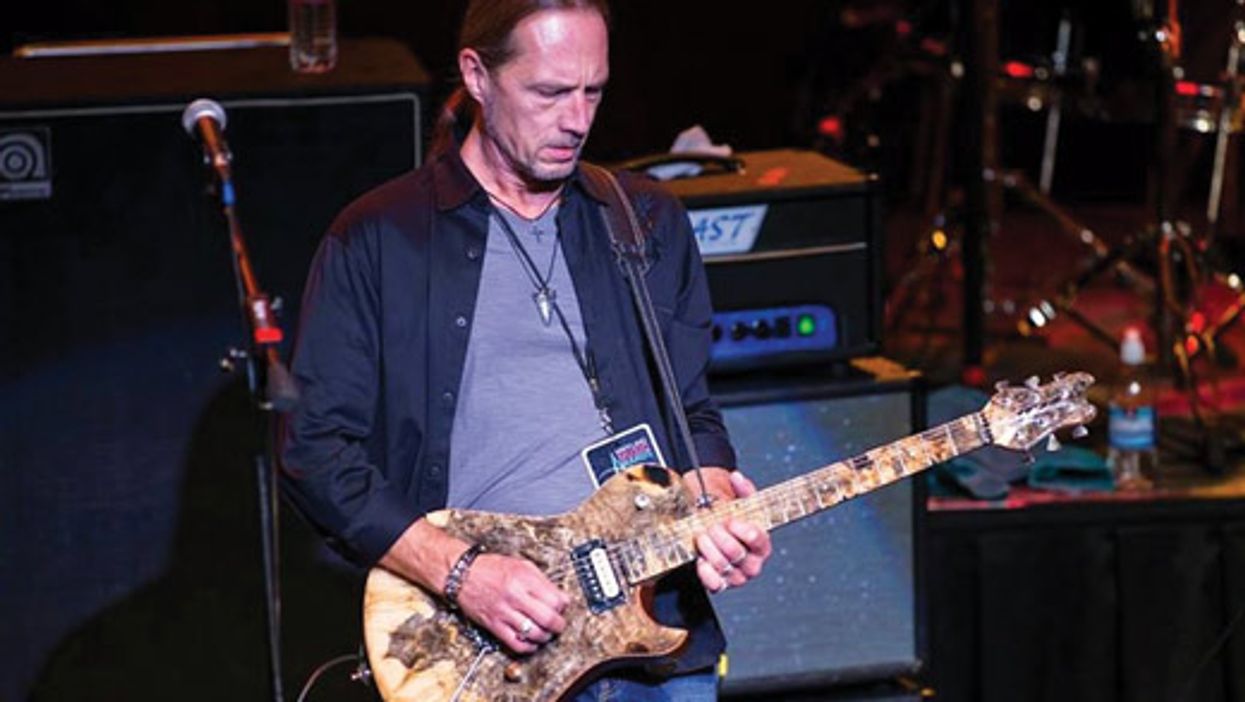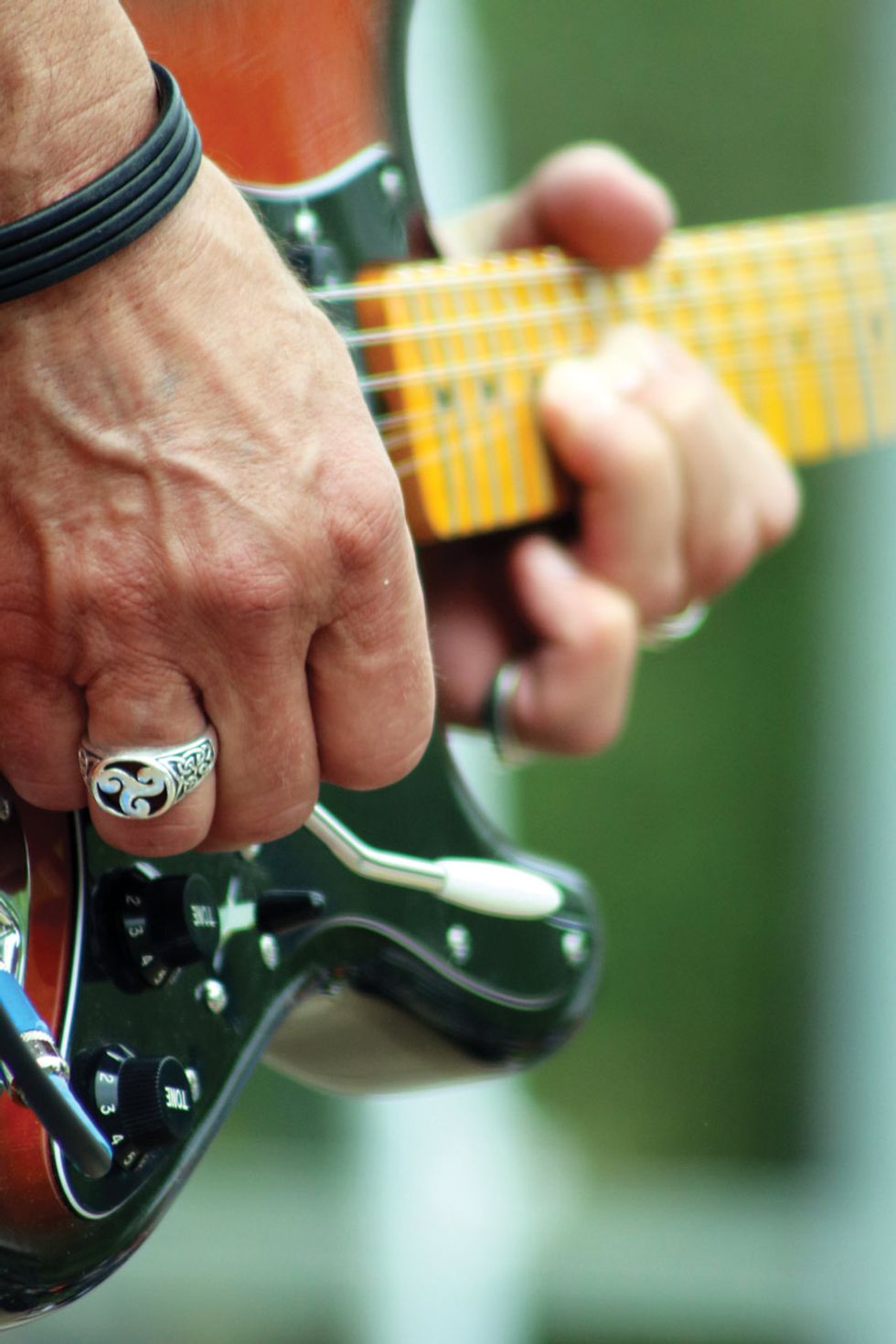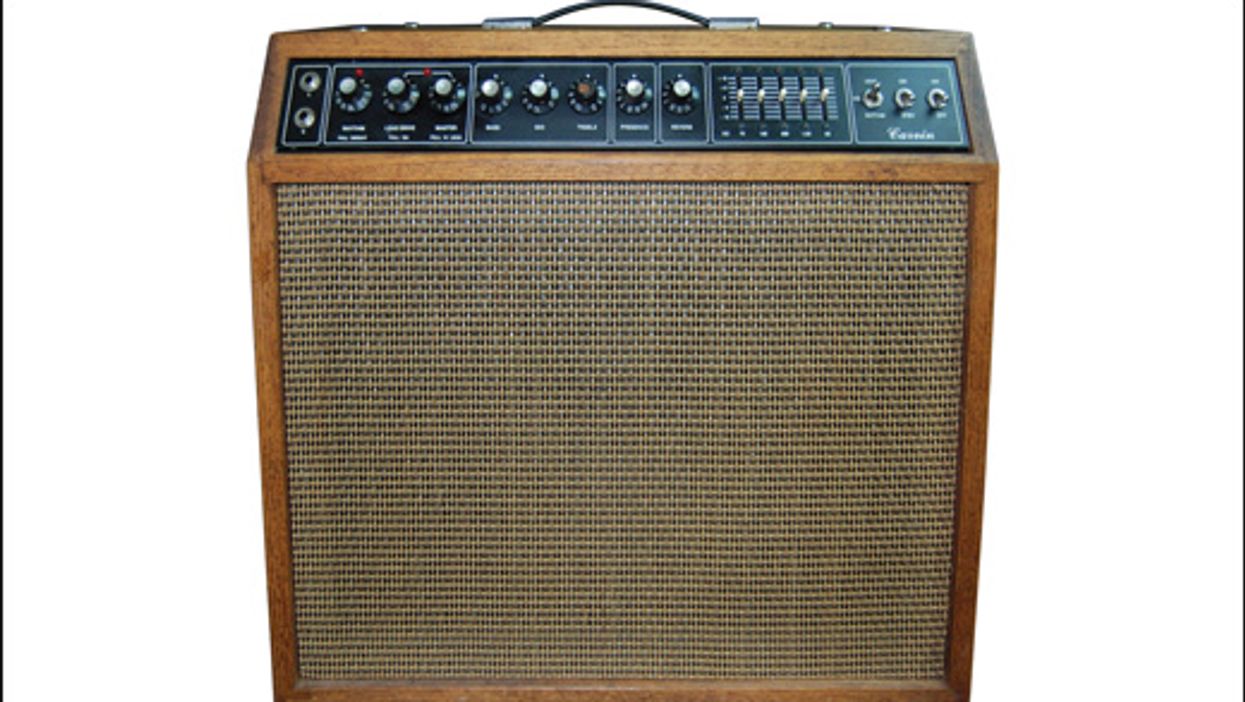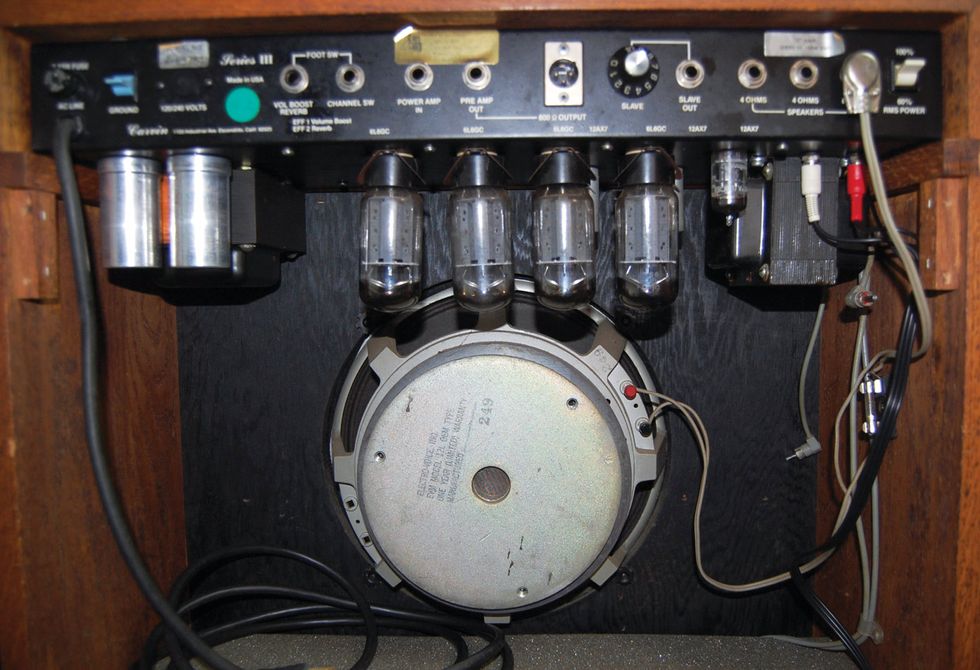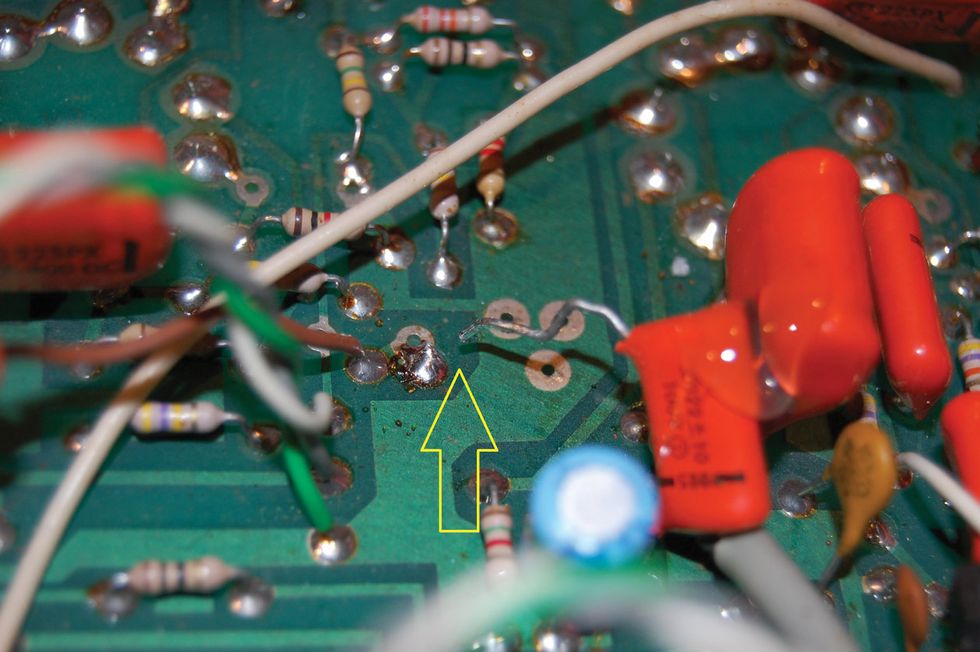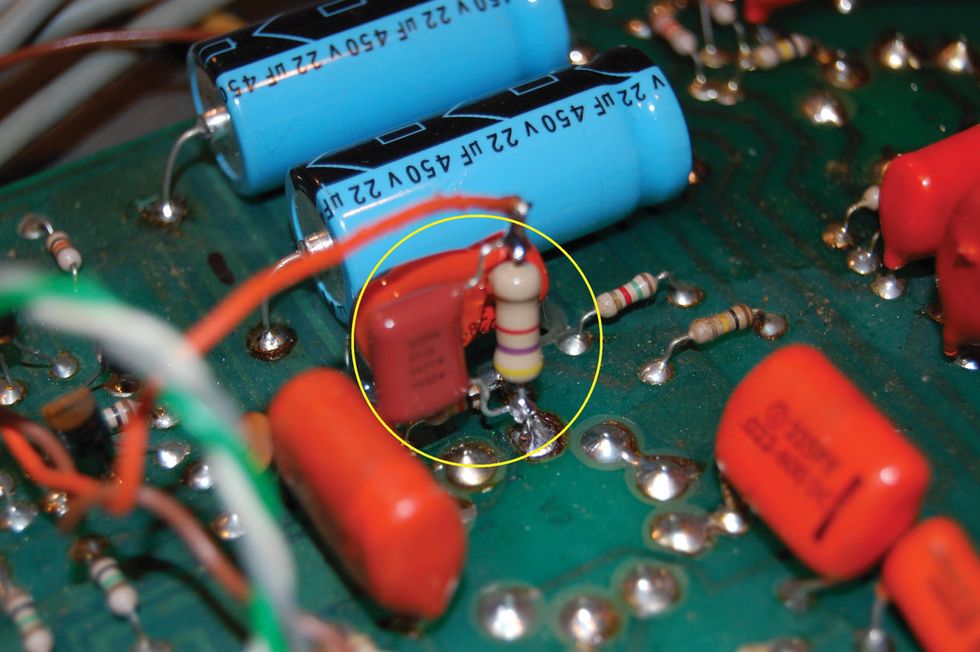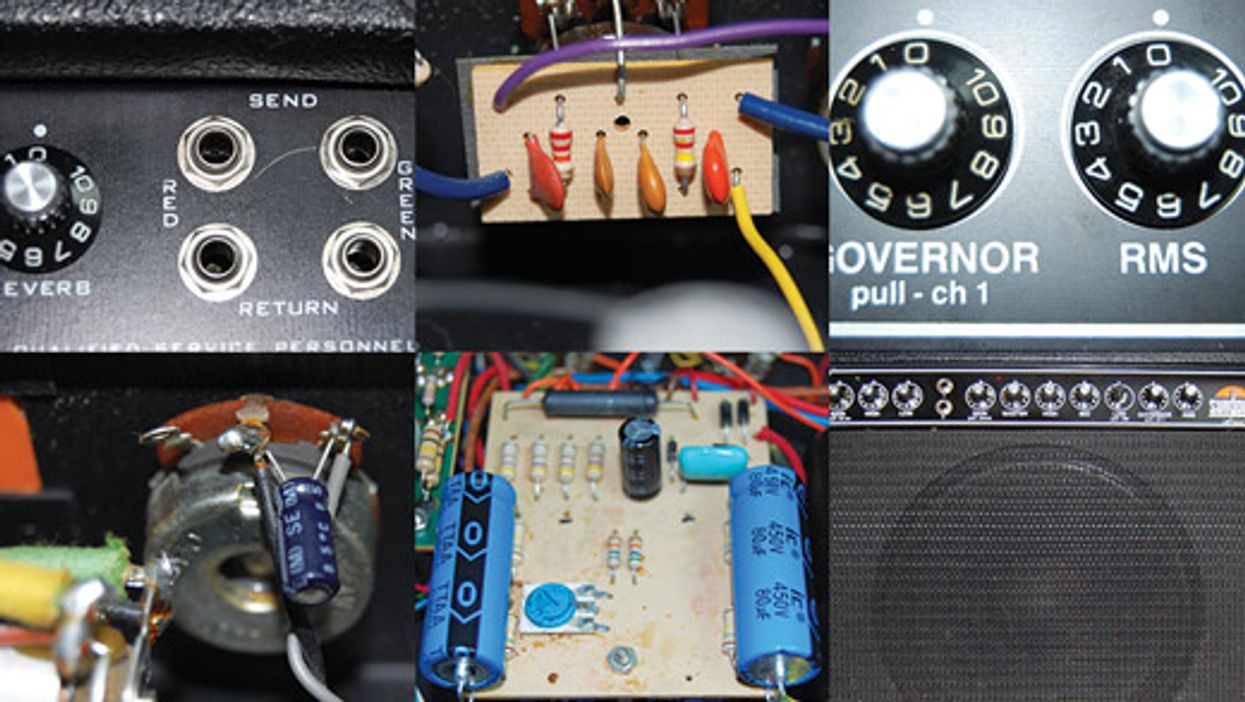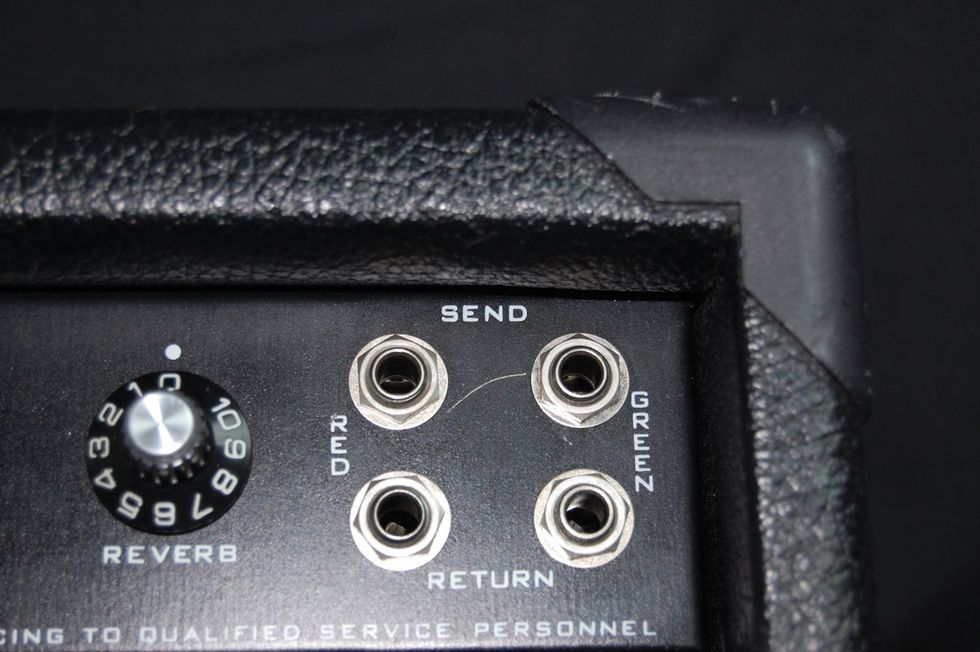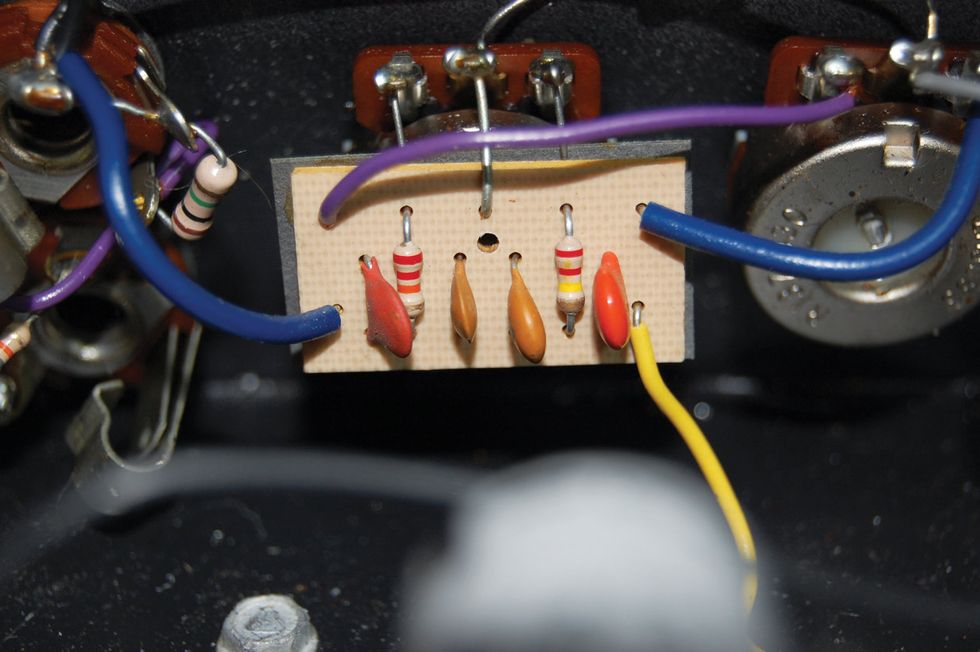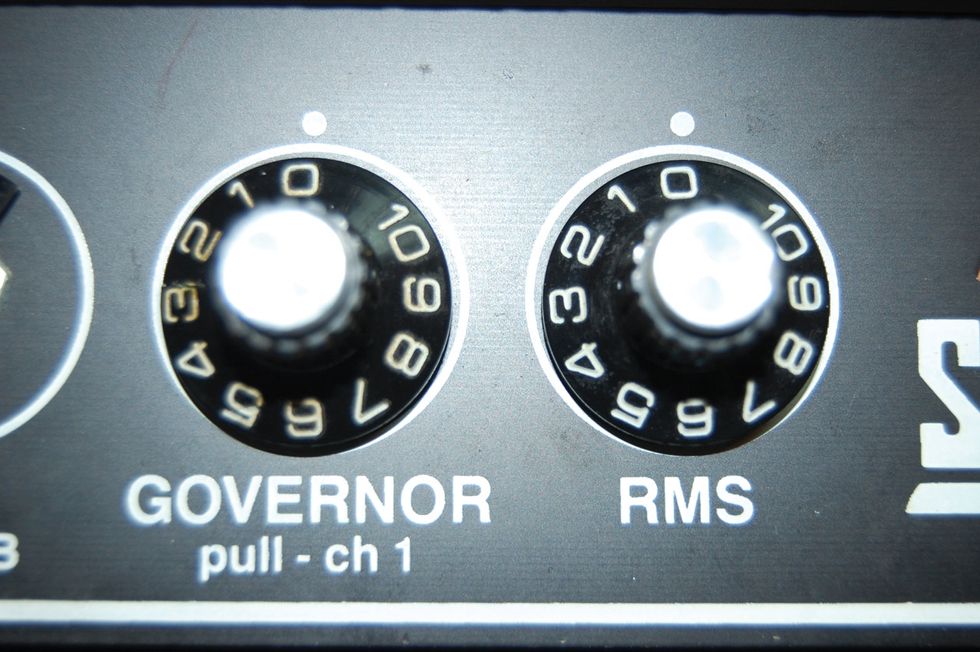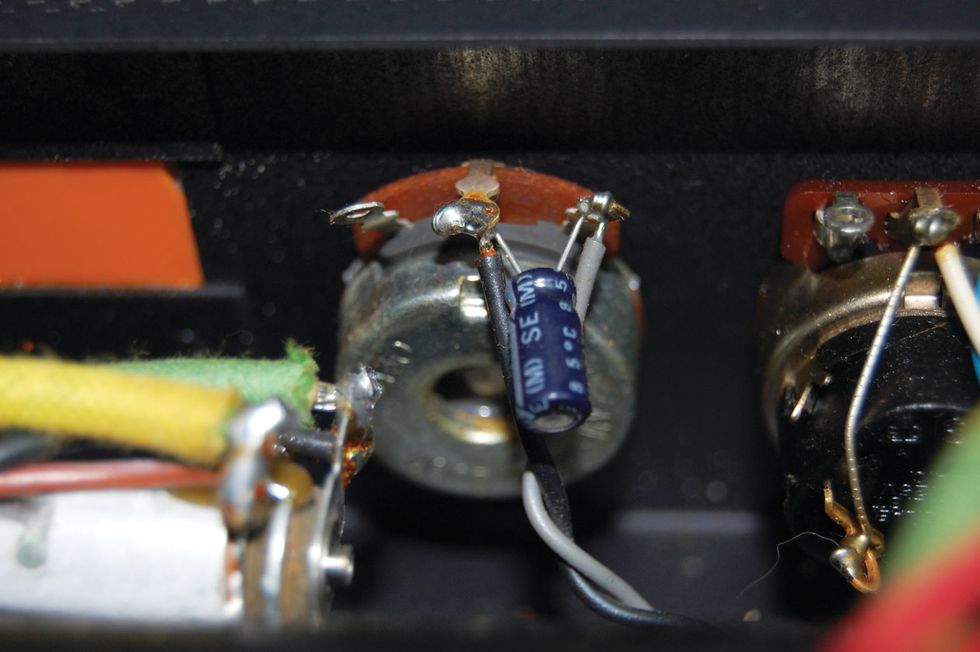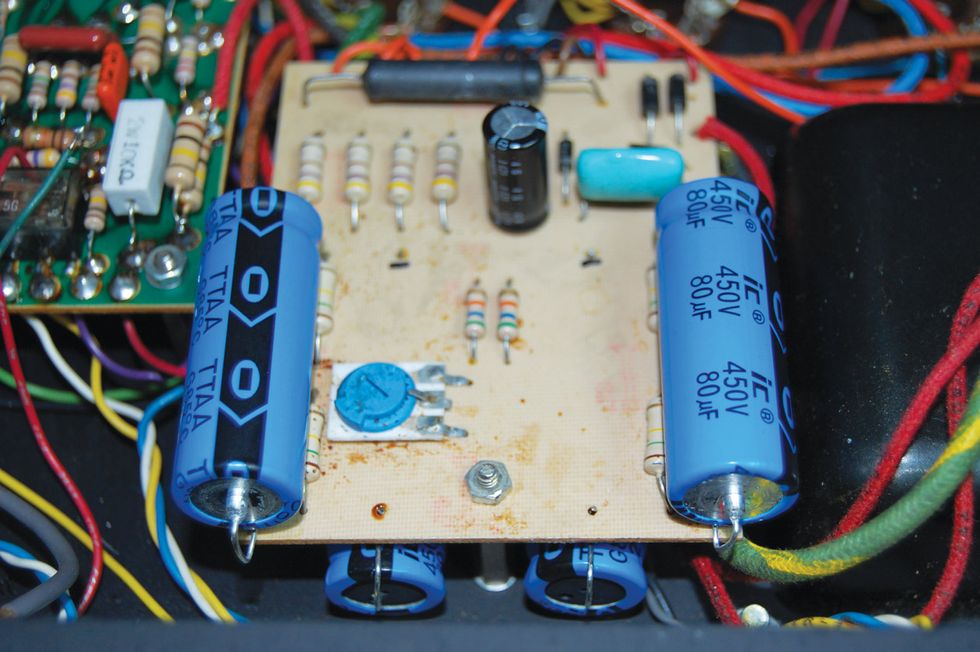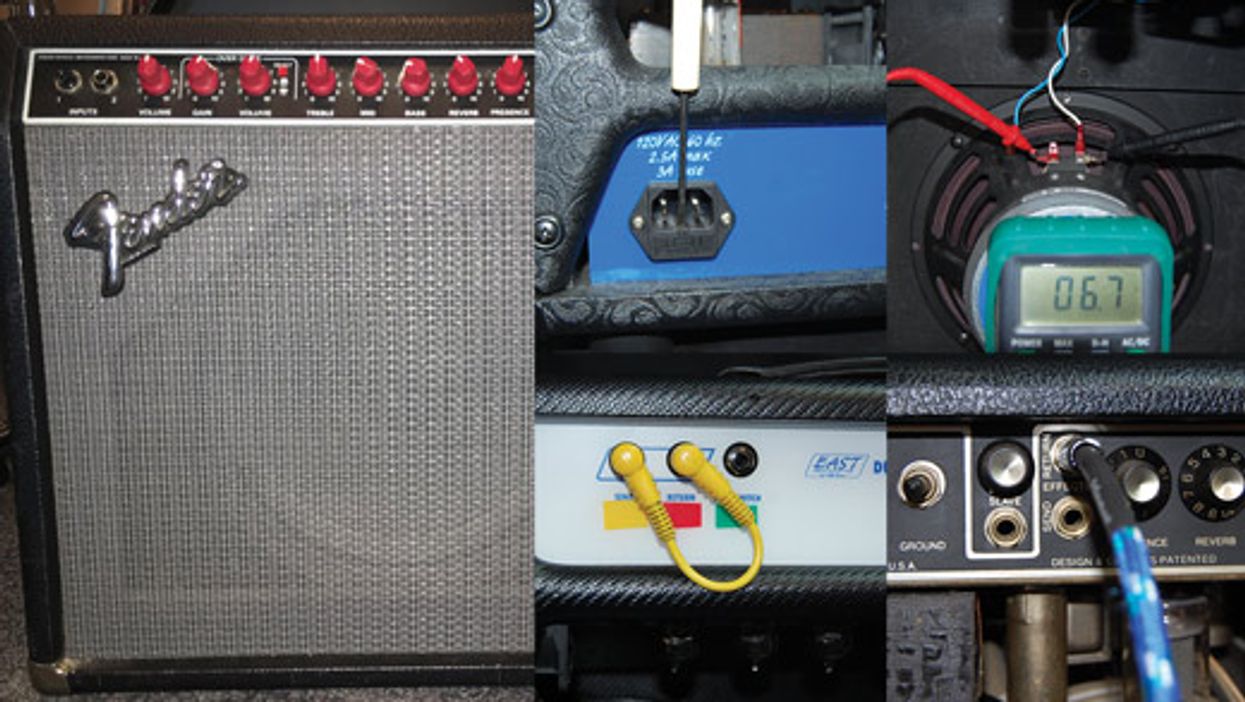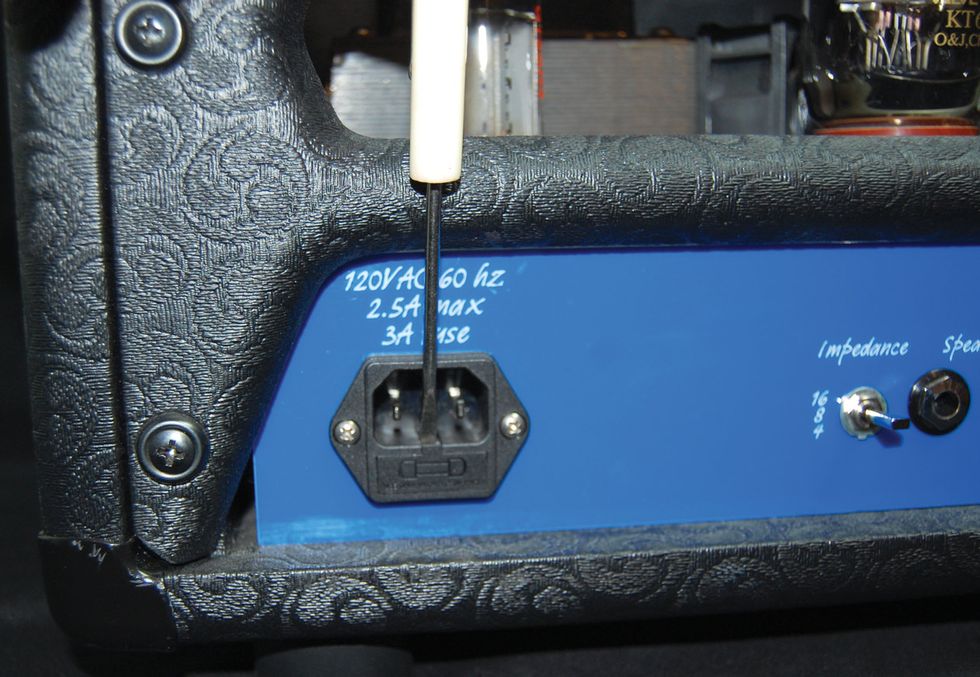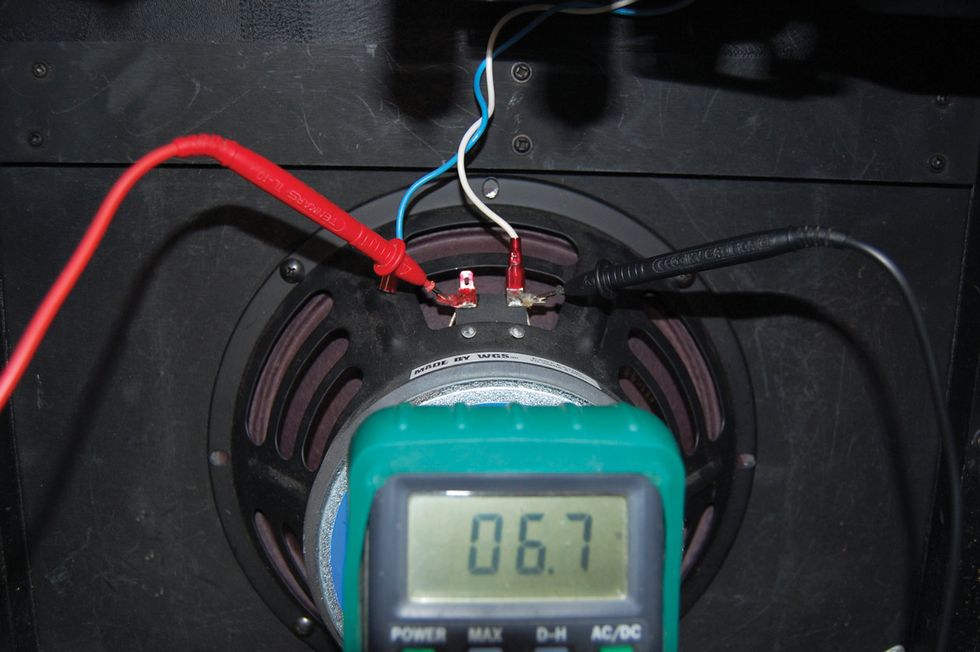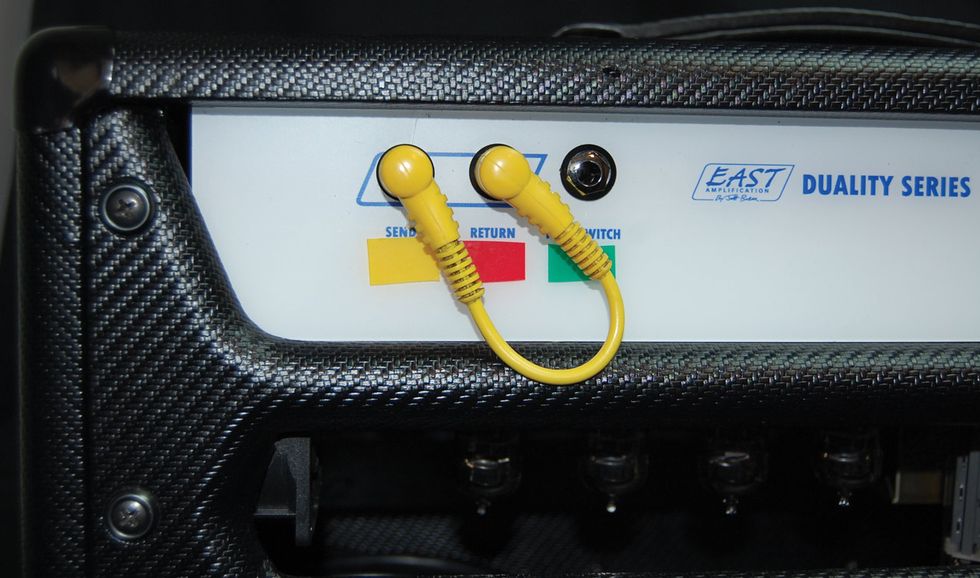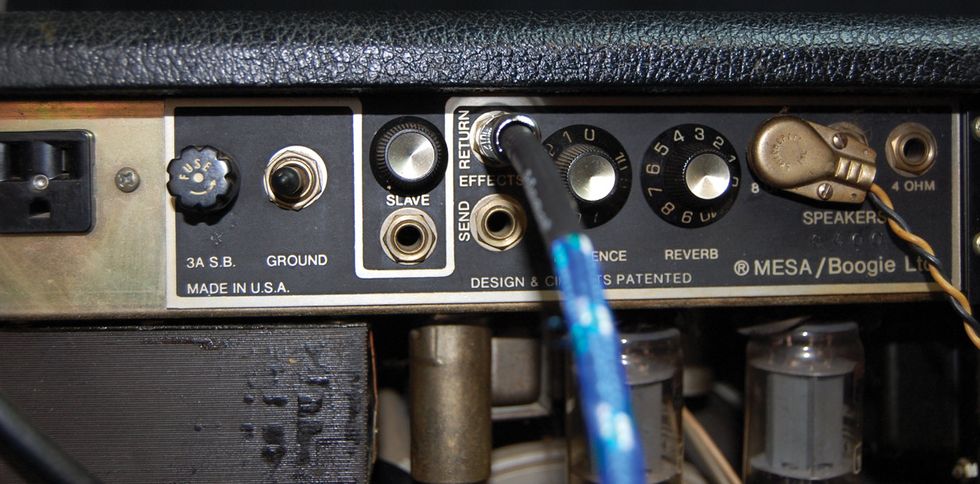Hi Jeff,
First of all, let me say I really enjoy
reading your column every month in
the best guitar magazine on the market.
I need to know how to “tame”
my Fender DeVille—it is the loudest
60-watt amp I’ve ever heard and I’m
not wild about the overdrive channel.
I can never get my volume past
2 before everyone is yelling for me
to turn it down. I’ve thought about
replacing the 6L6s with 6V6s, but
what I’d really like to do is put some
KT66s in place of the 6L6s. (Of
course, that won’t help me tame the
output at all.) Can you suggest any
mods I can have done to help me with
this problem?
From one Jeff to another, thanks
and keep the great articles coming
every month!
—J. Jeff Bissette
Hi Jeff,
Thanks for being an avid reader of Premier Guitar and my column. Glad you enjoy the topics.
The DeVille series is probably the most successful in Fender’s product line and the amps came in two incarnations: the earlier offering, the Blues DeVille, and the later version, the Hot Rod DeVille. The “updated” version was given more drive in the overdrive channel by tapping into an unused half of a 12AX7 preamp tube (V2B) in the Blues DeVille design.
On the surface this may seem like a good idea—make full use of a component that is already installed and give more gain to an amp whose predecessor may not have had enough overdrive to satisfy some rockers. While the result may have worked for some, it’s obvious by your comment that it did not work for you, and I don’t think you’re alone. To me, this is an example of “just because you can doesn’t mean you should.” Maybe this idea could have been executed differently, but in my opinion, the way the extra stage was implemented in these amps results in a drive channel that’s very “grainy” and not as musical as I’d like. You probably feel the same way.
Now I could just tell you to have your tech remove R 20 and R 25 and connect the signal input end of C 10 to pin 13 of K2B—but I won’t. In theory, this would bypass the new circuitry associated with V2B, but there have been a substantial number of other circuit changes compared to the Blues DeVille, so I’m not sure the remaining Hot Rod circuit would be satisfactory enough to be worth the modification. At some point I may have the opportunity to perform this mod and I’d be very curious to hear the results. But for now, let’s see if I can give you a few real-world suggestions to improve your amp.
Let’s first address your dislike of the drive channel. I’d suggest trying different types of preamp tubes, particularly in the V2 position. Changing the gain structure in the amp with alternate tubes could possibly result in a more musical drive channel. Since it’s the most readily available, you might first try installing a 12AT7 in the V2 position. This will reduce the gain in the last two stages of the amp prior to the phase inverter, but know that it will affect the clean channel as well, so you may need to raise the typical setting of your clean volume control.
If this doesn’t yield acceptable results or you would just like to get more adventurous, try both an ECC 832 and ECC 823 in the V2 position. Each of these tubes has one half equivalent to a 12AX7 and the other half equivalent to a 12AU7, but they are mirror images of each other. This means that each one will reduce the gain in the opposite stage than the other and only one, as a matter of fact, will affect the clean channel. Hopefully one of these tubes will yield a better-sounding drive channel.
Let’s move on to taming the amp’s volume. Installing 6V6 output tubes in this amp is not something I’d recommend. The plate voltages typically used with 6L6 output tubes would be a bit too high to use with most 6V6 output tubes. That coupled with the fact that the primary impedance of the output transformer is more than likely lower than what is recommended for 6V6s, I’d caution against it. And of course KT66s, being similar to 6L6s, won’t result in any significant power reduction.
One quick thing you might want to try is installing a 12AT7 in the phase inverter (V3) position. It won’t reduce the amp’s output power, but it will reduce the signal feeding the output tubes and may give you more control with the master volume. As far as reducing the power that’s reaching the speaker, there are a couple of ways to accomplish this. One is to use a power attenuation device of some sort, such as a THD Hot Plate, Tube Amp Doctor Silencer, Rivera RockCrusher, Tone King Ironman, Dr. Z Air Brake, and Alessandro Muzzle. Inserted between the output of the amp and the speaker, these devices allow you to adjust your amp to the settings that sound and feel the best, and then attenuate the amount of power being sent to the speaker. This lets you control the overall volume. Some players get creative and mount these devices in the back of their combo, so the unit is always connected and ready to go.
Another way to reduce the output power of your amp is to use a device called a Yellow Jacket, which is designed by THD Electronics. These adaptors plug into the output sockets of your amplifier and convert the output tubes from the current 6L6s to EL84s. Doing this will reduce the output power of your amp from 60 watts to approximately 20-30 watts. This should provide a much more manageable power for smaller venues. However, this will also change the amp’s sound. While 6L6s have an open, glassy tone, EL84s tend to be more compressed with a bit more midrange and less highs. Depending on what you’re looking for, this could actually be an added benefit.
Well, there you have it—some simple, player-friendly possibilities to tame your amp. I hope one of them helps make your DeVille divine.
[Updated 12/12/21]



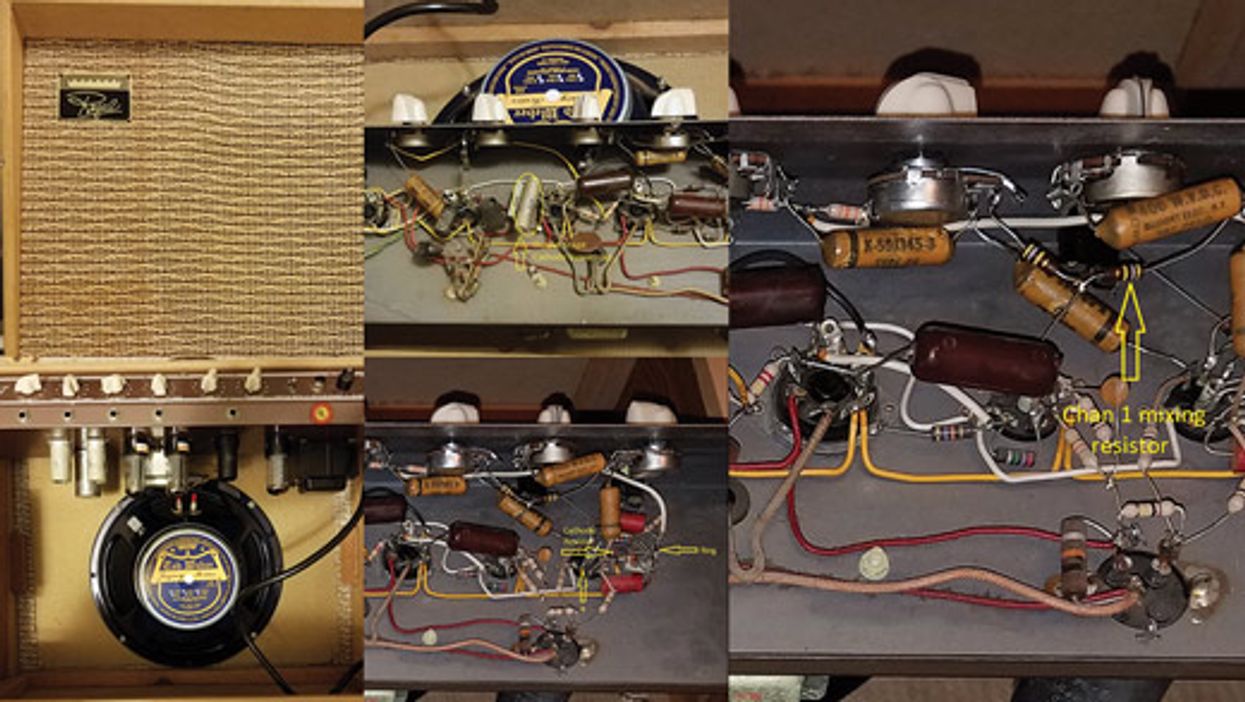
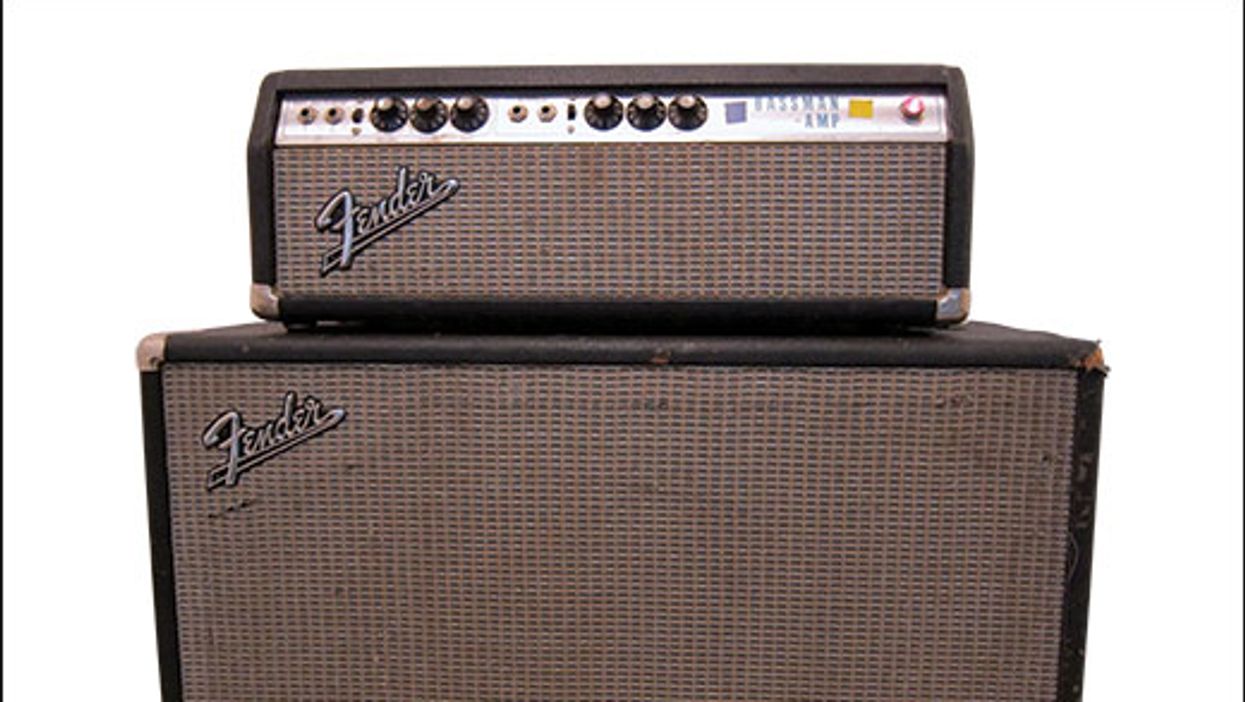
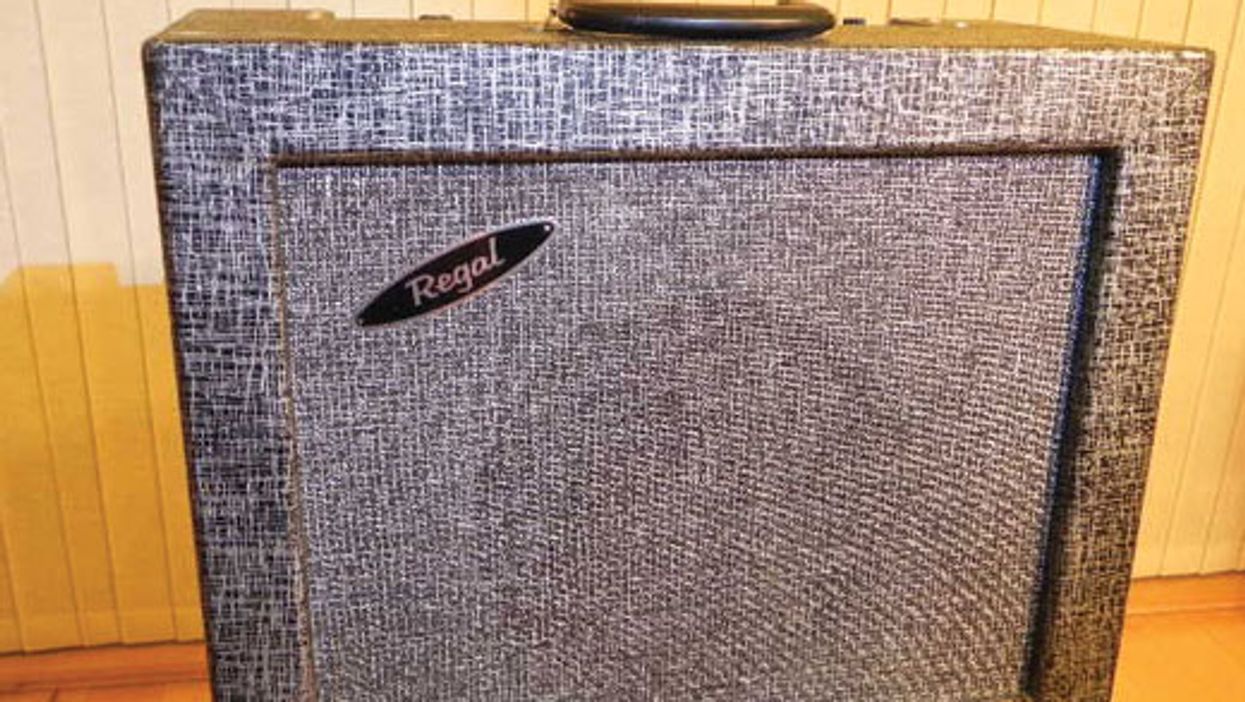









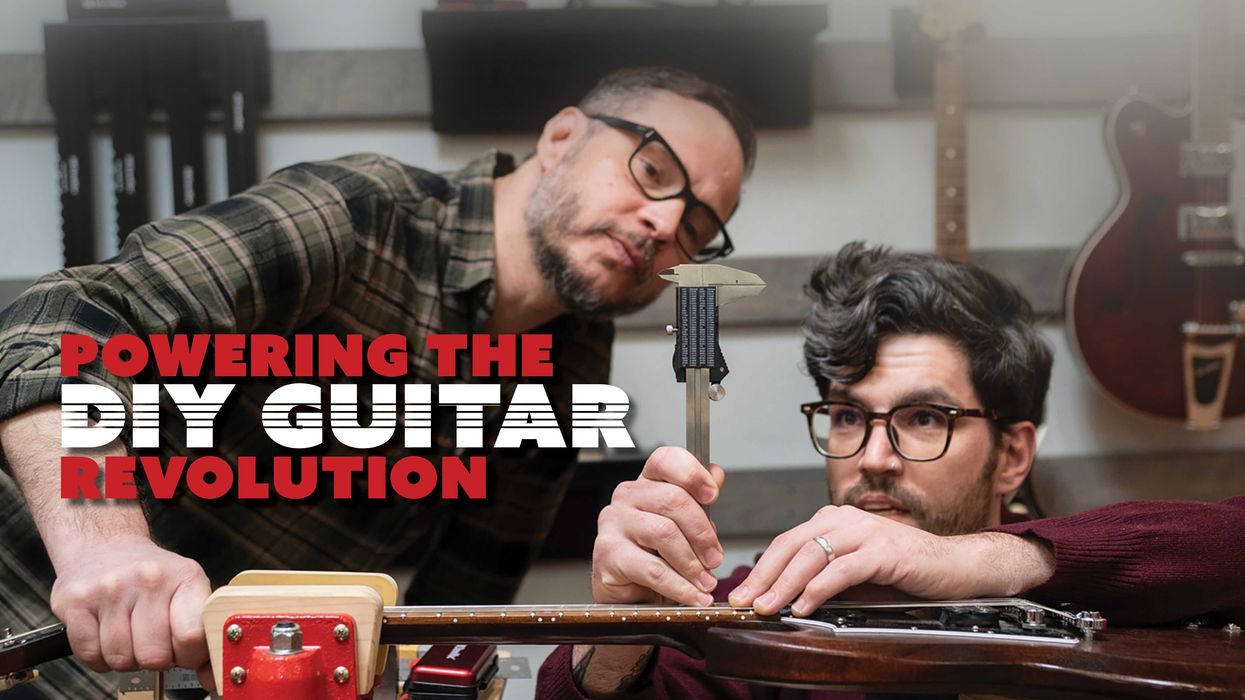
![Devon Eisenbarger [Katy Perry] Rig Rundown](https://www.premierguitar.com/media-library/youtube.jpg?id=61774583&width=1245&height=700&quality=70&coordinates=0%2C0%2C0%2C0)
